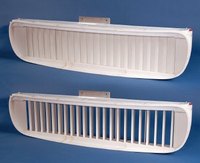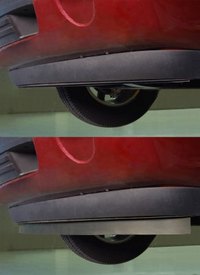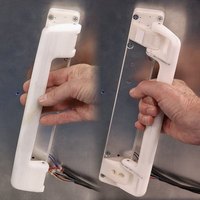GM Achieves Technology Breakthrough with Smart Materials
Smart Materials will Enable Vehicle Features to Move without Motors
WARREN, Mich. - General Motors scientists demonstrated breakthrough developments in smart materials technology at a media briefing today at GM's Research and Development Center.
Shape memory alloys and polymers are examples of types of smart materials that GM is developing for use in its products. Smart materials can change their shape, strength, and/or stiffness when heat, stress, a magnetic field or electrical voltage are introduced. Shape memory alloys, and polymers in particular, "remember" their original shape and can return to it, opening new possibilities for many movable vehicle features.
GM is targeting to integrate smart materials technology into its vehicles by 2010.
"Smart materials will change the look and feel of our cars and trucks," said Larry Burns, GM vice president of Research & Development and Strategic Planning. "With these new materials, functionality can be 'programmed in' to enable innovative designs, improved efficiency, and new and improved features that will make our vehicles more exciting to own and operate than the automobiles of the past."
Actuators and sensors made from these materials have the potential to improve vehicle performance and fuel economy, and enable new comfort and convenience features. These actuators and sensors can provide significant benefits when they are used to replace conventional motorized or hydraulic devices by reducing vehicle mass, component size and complexity and improving design flexibility, functionality and reliability.
A few example applications include:
An adaptive interior grab handle that automatically presents itself from a folded position to make for an easier, more intuitive entry into the vehicle, Active vehicle surfaces, such as air dams and louvers that adjust to govern airflow, improving aerodynamics and performance, and Hood, door latch, and glove box releases for more convenient access. According to Alan Taub, GM executive director of Research & Development, smart materials are building on previous materials advances GM has introduced over the last several years.
"These new smart materials follow a long list of material applications we are already using," said Alan Taub. "A few examples include novel aluminum forming processes that provide enhanced body panels and lightweighting, polymer nanocomposites that provide superior mechanical properties at lower cost, and magnetorheological fluids for improved chassis systems.
"The properties inherent in shape memory alloys and polymers have the potential to be game-changers in the automotive advanced materials field, eventually leading to vehicle subsystems that can self-heal in the event of damage, or that can be designed to change color or appearance."
Smart materials are being used in other industries in various applications including medical devices, cell phone antennas, toys and sporting goods.
GM is collaborating with HRL Laboratories and the University of Michigan in developing potential applications. To date, GM has more than 175 U.S. patents issued or pending based on research work and application development in the field of smart materials.
General Motors Corp. , the world's largest automaker, has been the global industry sales leader for 76 years. Founded in 1908, GM today employs about 284,000 people around the world. With global headquarters in Detroit, GM manufactures its cars and trucks in 33 countries. In 2006, 9.1 million GM cars and trucks were sold globally under the following brands: Buick, Cadillac, Chevrolet, GMC, GM Daewoo, Holden, HUMMER, Opel, Pontiac, Saab, Saturn and Vauxhall. GM's OnStar subsidiary is the industry leader in vehicle safety, security and information services. More information on GM can be found at www.gm.com.





